Greg Waldstreicher is founder of DoseSpot of Baltimore, MD and a student at the University of Maryland. He is one of five college entrepreneurs competing for the Entrepreneur of 2010 award from Entrepreneur Magazine.

Tell me about DoseSpot.
DoseSpot is like a joint venture between two companies. One is a resell manager, which no longer exists, and Claricode, which is a healthcare software company out of Boston. Together we form DoseSpot.
I’ve noticed, reading the eligibility requirements for the college entrepreneur contest, that you can’t have any employees or made sales or provided any products through June 15, 2010. What does that mean in terms of where DoseSpot is in its current operations?
We don’t have any employees. We have our board of directors and our advisors. Regarding sales, we have been fortunate to do some business after June 15th deadline, which would still make us eligible.
Do you have customers in the queue?
Exactly. I can’t go into too many further details on exactly who those people are, but we’re definitely moving and shaking.
In the application video you did for the award, you mention your father is a doctor and he asked you to help develop a new prescribing tool. Was that the beginning of this and where the whole idea for the product came from?
More or less. He basically couldn’t stand getting all these faxes back and forth from the pharmacy and the fact that his office staff was just wasting so much time with the prescription process. He tasked me and said, “Try to figure out something.” I looked into the idea of e-prescribing and yeah, it was out there, but it was at the very beginning. This was a few years ago way before healthcare talk in Congress.
We stumbled upon Surescripts and we’re like, “We want to get in with these guys. We want to be Surescripts certified.” We entered an application with them awhile back. I don’t know how familiar you are with them, but their wait list is really long so we had to wait a few months. By the time we got off the wait list and we were ready to go, we had everything in place.
I know that you’ve already won a few awards for the DoseSpot concept. Tell me about some of those.
We entered the University of Maryland Business Plan Competition in May of 2009, but at that point, people really didn’t know what EMRs were, at least the people that we were presenting to. They know EMRs, but they didn’t know what e-prescribing was. We were presenting a concept that these people didn’t really think anything of.
I remember someone had said to me, “Why do you think doctors are going to want to do this e-prescribing stuff if they don’t have computers in all their examining rooms?” So you know, it was a little bit of a vague concept, and then we followed this path for a year. We came back, and now with healthcare reform and all the incentives in play, everybody’s like whoa, you guys are really in this. So the news definitely played in our favor.
Which awards have you won so far?
We won the Undergraduate category for the University of Maryland Business Plan Competition. We’ve also received a few grants from the Warren Citrin fund. Mr. Warren Citrin created a Social Impact Fund for growing startups. And that’s mostly through the University of Maryland.
You’ve taken those award dollars to invest in the company. Is that right?
Yes, exactly. It has all gone towards the company, not towards vacations
Too bad.
Yeah, you’re telling me.
Have you had any other outside funding other than those sources?
No.
You said that you don’t really have any employees. How are you handling the support and building the infrastructure and product development and all that?
All that is being done in conjunction with Claricode, which I mentioned. They’re a healthcare software company. They only do healthcare software, out of Waltham, Massachusetts. They’re a great company, great guys. They’ve been really helpful and they’re helping us with all that.
And they handle the back end? When you call for support, you’re actually getting them?
Correct.
Do you have plans to move beyond them once you get out of school?
DoseSpot is not just something that as soon as I graduate I’m just going to leave behind. It’s something that I’m definitely planning on working with when I graduate. I work on it all day and all night. I live and breathe this stuff right now. I love health IT. I think it’s the place to be. Claricode is just a great partner right now and we’re sticking with them.
How are you marketing the company and the products?
We do a lot of newsletters. A lot of our leads actually come through the Web site. And just the regular old marketing tactics. We have a great relationship with Lexi-Comp, the drug database company. We’ve been pretty successful, but there are a few of the ways.
I noticed on your Web site that you say you want to target software vendors that have existing applications rather than individual doctors. Why did you elect to go that route?
Initially we had a standalone version and we were planning to market it back to individual doctors. But when we spoke to the doctors, they wanted a completely integrated system. They wanted to use the complete patient demographics. They didn’t want to have medication data in two separate systems that weren’t talking to each other. For example, in their electronic medical records; but it also entered separately in the e-prescribing system. So we basically switched our model to accommodate what the doctors wanted.
Is it safe to assume that the new customers you have going up are vendors?
Correct.
The Hinman CEO program sounds unique. Tell me a little bit about it and why you chose it.
The Hinman CEOs program was the first living and learning entrepreneurship program in the country. It’s part of the University of Maryland and it’s absolutely amazing. We’re building on the advice that we get, specifically from Director Dr. James Green. It’s pretty amazing.
Also, the access to the funding that they’ve given us through this Warren Citrin Fund, as well as the University — they’re the same competition — has really helped us take DoseSpot to where it is. There are so many other examples of amazing companies that have come out of this program.
Basically, it’s all the students in the program live in a building on campus together. A few times a week, we have classes together, but it’s not the class where you get the unique experience. It’s from living with other kids, young adults or students, that have the same kind of mindset as you. You’re always able to bounce ideas off each other.
You know, if you were just living in any typical dorm and you knock on your neighbor’s door and said, “Oh, I got this great idea,” that kid might not know what to do. Whereas when you’re with kids who have this whole entrepreneurial mindset, everybody’s like, “Oh, this is what we should do,” and, you know, “This is how we might line those up until the next thing.” It’s really been a great experience. I’ll be entering my third year in the program right now.
When do you graduate?
May of 2011.
So it’s not just all keg parties in the dorm?
Well, we still know how to party. We’re still getting the college experience.
Excellent. So what’s your long-term plan for DoseSpot?
We really see healthcare and information technology as the future. We really want to be along for the ride with this healthcare technology wave. We don’t see an exit right now.
Do you have a specific exit strategy for the company?
In my mind probably, but out on paper, no.
How old are you?
I am going to be 21 in less than a month.
Amazing. Well, good for you. Hopefully we’ll get you some votes. When you win the money, you can say it all began with HIStalk.
I’d rather have customers than the votes.

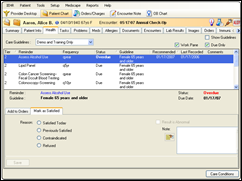
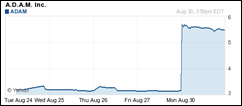
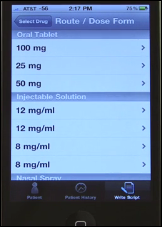




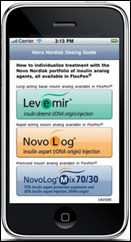


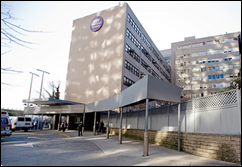
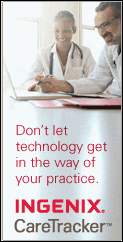
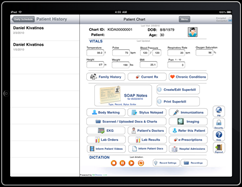


The article about Pediatric Associates in CA has a nugget with a potentially outsized impact: the implication that VFC vaccines…